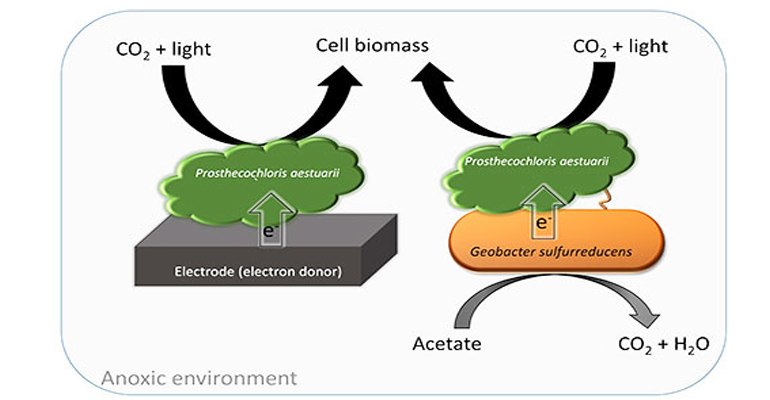华盛顿州立大学的研究人员最have discovered a new type of cooperative photosynthesis that could be used in engineering microbial communities for waste treatment and bioenergy production.
Please reload the page
Do you want to read the whole article?
- Six editions per year
- Full access to all digital content
- The E-magazine Bioenergy international
- And more ...

Researchers at Washington State University in the US have discovered a new type of cooperative photosynthesis that could be used in engineering microbial communities for waste treatment and bioenergy production. The paper, “Syntrophic anaerobic photosynthesis via direct interspecies electron transfer”describes the unique metabolic process seen for the first time in a pair of bacteria and has been published inNature Communications.
Photosynthetic bacteria account for nearly half of the world’s food production and carbon-based organic material. The research could also improve understanding of lake ecology.
Phototroph + electron generator
Discovered and identified a few years ago by researchers at the US Department of Energy’s (DOE) Pacific Northwest National Laboratory (PNNL) and Southern Illinois University,Prosthecochloris aestauriiis a green-tinged, plant-like microbe that comes from the extreme environment of Hot Lake, a high salinity lake in northern Okanogan County near Oroville, Washington.
The bacterium is able to photosynthesize, using sunlight along with elemental sulphur or hydrogen sulphide to grow.
The researchers noticed thatP. aestuariitended to gather around a carbon electrode, an electricity conductor that they were operating in Hot Lake.
The researchers isolated and grewP. aestuariiand determined that similar to the way half of a battery works, the bacterium is able to grab electrons from a solid electrode and use them for photosynthesis.
The pink-colouredGeobacter sulfurreducens, meanwhile, is known for its ability to convert waste organic matter to electricity in microbial fuel cells. The bacterium is also used in environmental cleanup. Like animals and humans,G. sulfurreducenscannot photosynthesize and it consumes organic compounds, such as acetate releasing carbon dioxide (CO2).
The bacterium is known for its ability to donate electrons to a solid electrode. As it consumes acetate, it generates electrons, which can be collected as electricity.
Microbes paired up in the WSU lab
Led by Haluk Beyenal, the Paul Hohenschuh Distinguished Professor in the WSU Gene and Linda Voiland School of Chemical Engineering and Bioengineering, and postdoctoral researcher Phuc Ha, the research team surmised that the bacteria might be able to help each other grow and put them together in the lab.
The researchers found thatP. aestuariicould accept electrons generated fromG. sulfurreducensand use them in a new type of anaerobic photosynthesis never before seen.
Similar to how a battery or fuel cell works, the bacteria transfer electrons. They feed off each other to grow under conditions in which neither can grow independently.
Ecology-friendly implications
From an ecological perspective, the researchers say that this new form of metabolism may play an important role in carbon cycling in oxygen-free zones of poorly mixed freshwater lakes. It may also present new possibilities for engineering microbial communities for waste treatment and bioenergy production.
We think this could be a common bio-electrochemical process in nature, said Beyenal, whose team is working to better understand the electron transfer mechanism.
The work was funded by the DOE with researchers from PNNL and China University of Geoscience collaborating on the project.



